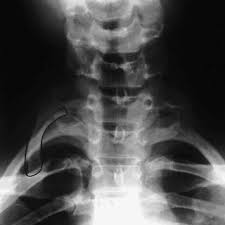Neurogenic thoracic outlet syndrome (nTOS) is a common neurological syndrome that causes pain in the arms, forearms and hands, numbness and/or weakness. This condition affects 0.3-8.0% of the US population and is usually caused by nerve impulses from the brachial plexus of the neck through a region called the thoracic outlet.
“Clinicians can now scan for nTOS cases and patient history and symptoms by ultrasound.”
Despite its prevalence, this condition is difficult to diagnose in a clinical setting. However, researchers from Midwestern universities have recently discovered a previously unknown cause of nTOS and are an effective way to identify it in patients.
Heather F. Smith, Ph.D., Director of Anatomical Laboratories, Sean Reeder, DO, Associate Dean, representing the University of Arizona School of Orthopaedics (AZCOM), is currently studying anatomical variations in cervical muscle tissue and neural pathways may help At nTOS, and study the utility of ultrasound to diagnose these changes.
Together with their team of orthopaedic surgeons, Vanessa Leonhard and Gregory Caldwell, and AZCOM third grade student Mei Goh, they discovered anatomical variations associated with nTOS.
A classic understanding of the anatomy of the region is that the nerves of the brachial plexus move between the muscles of the scalene (neck) without being impacted in the direction of the arm, and traditional tests for the diagnosis of nTOS assume this pattern .
However, these researchers found that parts of the brachial plexus often pierce the abdomen of the anterior scalene muscle and pass through it, causing nerve fibers to be subjected to nerve impulses and may cause nTOS symptoms.
Using a large number of cadaver samples, they found that up to 50% of people may have clinically relevant variations in the neck, some of which pierce the anterior scalene muscle. This surprisingly common pattern has far-reaching clinical implications because it can cause nerves to be affected and thus make patients susceptible to nTOS.
To determine if these variations were significantly associated with nTOS symptoms, they recruited a sample of volunteers who filled out a detailed questionnaire describing any neurogenic neck or arm symptoms they suffered, including those Those usually found in nTOS and subject them to the traditional nTOS diagnostic location test.
The brachial plexus and scalene muscles of each subject were then assessed using ultrasound. The team found that ultrasound can reliably show variations in brachial plexus puncture, and these mutations are found to be significantly higher in subjects with nTOS symptoms. In fact, ultrasound results are more reliable than traditional tests in the diagnosis of nTOS.
These findings have important implications for the diagnosis and treatment of nTOS and reveal why nTOS is historically difficult to diagnose. The study also showed that ultrasound can help clinicians diagnose nTOS cases caused by these anatomical variations, as well as patient history and symptoms.





 Price is 8-20% Lower Than Other
Price is 8-20% Lower Than Other






